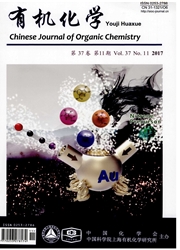

 中文摘要:
中文摘要:
醌霉素是一类由链霉菌产生的环状寡肽抗生素,结构上拥有一对特征性喹喔啉-2-甲酰基或3-羟基喹啉-2-甲酰基单元.醌霉素选择性插入到DNA分子的碱基对之间,抑制DNA的复制和转录,因而具有良好的肿瘤抑制活性.综述了近十年来醌霉素家族抗生素的生物合成研究进展,通过比较醌霉素不同代表成员的基因簇,归纳这些化合物与其它类型天然产物生物合成以及色氨酸分解代谢中的相似反应,并剖析催化这些反应的酶的功能特性,揭示了醌霉素的化学结构特征和其不同成员之间结构差异的形成原因.在此基础上,还介绍了在异源宿主大肠杆菌中用组合生物合成的方法产生醌霉素类非天然的天然产物的范例,展示了该类抗生素工业化生产的潜力.
 英文摘要:
英文摘要:
Quinomycins are a type of cyclic oligopeptide antibiotics, featuring a pair of moieties, either quinoxaline-2-carboxy or 3-hydroxyquinoline-2-carboxy group. The characteristic structural units are capable of intercalating preferentially into particular DNA basepairs, thereby inhibiting DNA replication and transcription and hence confer remarkable tumor-inhibiting potency to quinomycins. Herein, an overview is made about the development of the exploration on quinomycin biosynthesis mainly during the past decade. Biosynthetic gene clusters are compared among various quinomycin family members, common biochemical reactions experienced in the biosynthesis of these compounds and natural products of other types as well as tryptophan catabolism are inducted with functional characteristics of the enzymes responsible for these reactions dissected, concurrently lending profundity to the revelation of the reasons for the formation of structural features shared and variances differentiated by quinomycins. Based on the elaboration, an exemplar is presented about the combinatorial biosynthesis in E. coli, the heterologous host to produce the unnatural natural product of quinomycin family, showing the potentiality of industrialization for the biosynthesis.
 同期刊论文项目
同期刊论文项目
 同项目期刊论文
同项目期刊论文
 In vivo investigation of the substrate recognition capability and activity affecting amino acid resi
In vivo investigation of the substrate recognition capability and activity affecting amino acid resi Genome Mining of the Biosynthetic Gene Cluster of the Polyene Macrolide Antibiotic Tetramycin and Ch
Genome Mining of the Biosynthetic Gene Cluster of the Polyene Macrolide Antibiotic Tetramycin and Ch Deciphering and engineering of the final step halogenase for improved chlortetracycline biosynthesis
Deciphering and engineering of the final step halogenase for improved chlortetracycline biosynthesis Crystal Structure of the Cysteine Desulfurase DndA from Streptomyces lividans Which Is Involved in D
Crystal Structure of the Cysteine Desulfurase DndA from Streptomyces lividans Which Is Involved in D Elucidation of Piericidin A1 Biosynthetic Locus Revealed a Thioesterase-Dependent Mechanism of alpha
Elucidation of Piericidin A1 Biosynthetic Locus Revealed a Thioesterase-Dependent Mechanism of alpha Unveiling the Post-PKS Redox Tailoring Steps in Biosynthesis of the Type II Polyketide Antitumor Ant
Unveiling the Post-PKS Redox Tailoring Steps in Biosynthesis of the Type II Polyketide Antitumor Ant Pathological phenotypes and in vivo DNA cleavage by unrestrained activity of a phosphorothioate- bas
Pathological phenotypes and in vivo DNA cleavage by unrestrained activity of a phosphorothioate- bas In vitro characterization of echinomycin biosynthesis: formation and hydroxylation of L-tryptophanyl
In vitro characterization of echinomycin biosynthesis: formation and hydroxylation of L-tryptophanyl Regulation of DNA phosphorothioate modifications by the transcriptional regulator DptB in Salmonella
Regulation of DNA phosphorothioate modifications by the transcriptional regulator DptB in Salmonella 期刊信息
期刊信息
